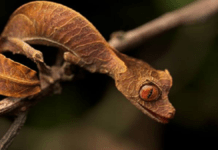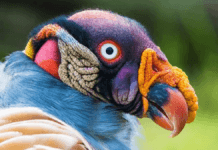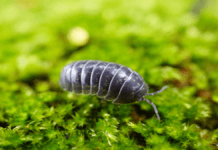Armadillo lizard is the one who is known as the real-life mini dragon in the modern world. Even though it has unique defenses and a thorny exterior, it is one of the cutest and most eccentric reptiles in nature. Just like all other armadillos, these lizards curl up their bodies when they feel threatened and are known to have sharp armor like feature throughout the body.
The scientific name of this species is Ouroborus Cataphractus. These Armadillo Lizards live as large family groups. Those groups have 30 to 60 individual lizards of all ages. Their life span varies from around 20–25 years. The male Armadillo lizards are territorial naturally with each other. But in the mating season, they become more protective of their female partners and try to keep male competitors away.

These little creatures are native to desert areas on the West Coast of South Africa. And also these lizards are endemic to Succulent Karoo Biome in Western and Northern Cape provinces in South Africa. They occur from Southern Tankwa Karoo, Piketberg Mountains to the southern Richtersveld. They inhabit mountain slopes, and rocky outcrops, and also they prefer sandstone substrate.
These Armadillo lizards are also known as Golden Armadillo lizards. They have a variety of colors usually ranging from light yellowish brown to brown. These lizards are very easy to identify and recognize as their whole body is covered with sharp heavy spines. The only part of their body which is not covered by these spines is the underside of their body. These little creatures appear very dangerous in the first look, but actually they are very slow-moving animals and scurry away when other creatures approached them.

The other unique feature of these animals is the unique defense mode they have. When these lizards feel threatened, they curl up their bodies. And also they bite their tails when curled up. Once they are in this position, their sharp spins act as a protection layer to their soft belly. They can stay in this position for up to an hour and this defense mode helps them to survive predators like mongooses, snakes, and big birds.
Would you like to know how they communicate with each other? They use head bobbing, tail wagging, and tongue-flicking for that purpose. For example, they use tongue-flicking to warn others about intruders.
When consider about their diet, they are carnivorous animals. They mainly feed on insects and spiders. Most of the time they depend on termites. But sometimes they also eat plant materials. Their reproduction season is between September and October.

These Armadillo Lizards are promiscuous in their behavior. It means that both male and female lizards have multiple life partners during their single breeding season. Another interesting factor about these lizards is, that they are one of the few lizards in the world that do not lay eggs. They give birth to one or two young lizards after carrying them for around 6 to 8 months. These female Armadillo lizards give birth once a year most of the time. But sometimes they take a year off between births. Unlike other lizards, the female ones even feed their young. These young one become mature to reproduce when they have a body length of around 95mm.
As they look like little dragons and as they are easy to catch, people use to keep them as pets and do pet trade. This significantly affected on the drain of the Armadillo lizard population. Because they stay as groups and because of their slow-moving nature, they have become an easy aim for illegal pet collectors. Because of this threat, keeping Armadillo lizards as pets has been named illegal. In the 1990s, this Armadillo Lizard has been classified as a vulnerable species by the IUCN. There are also other reasons which affect their population such as climatic changes and changing habitats because of the invasion of alien plants and poor fire management.

















